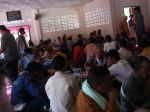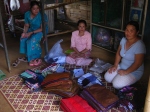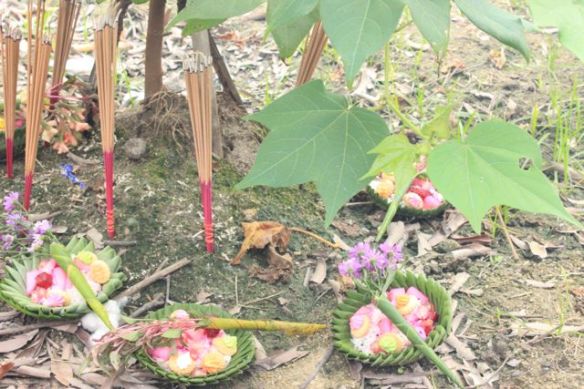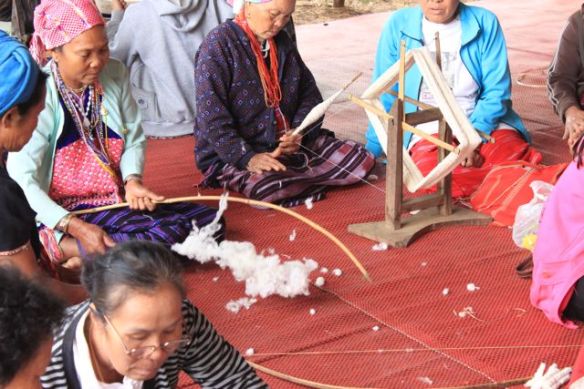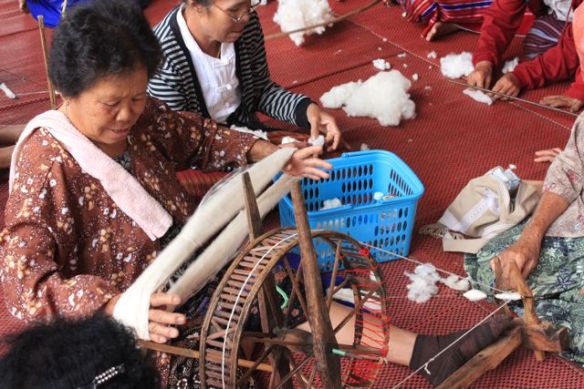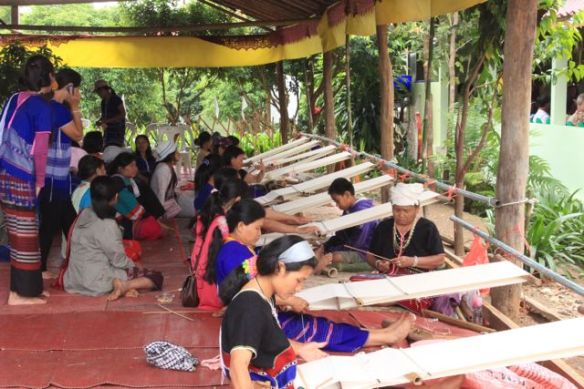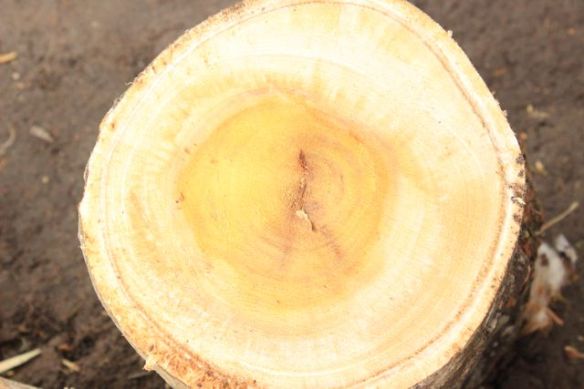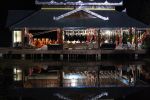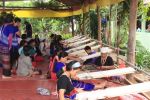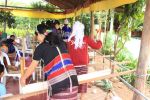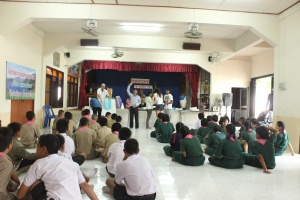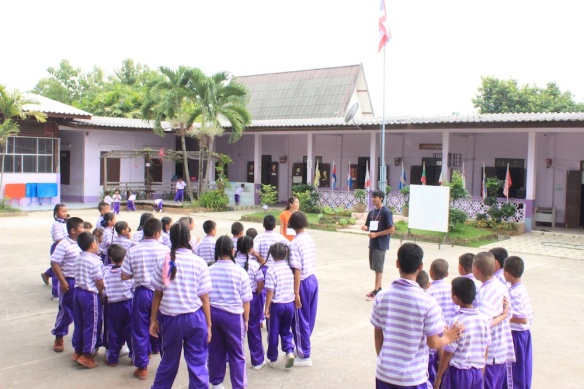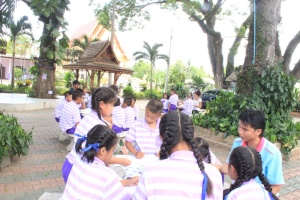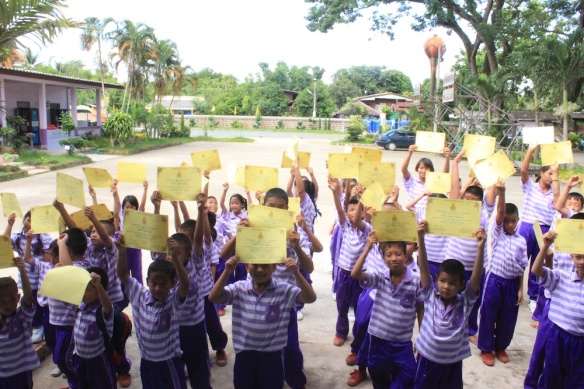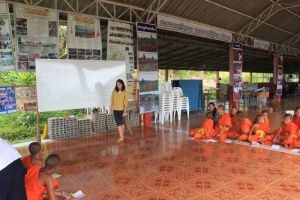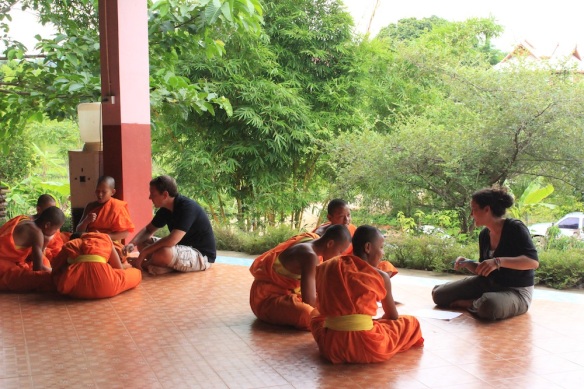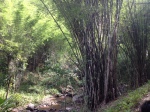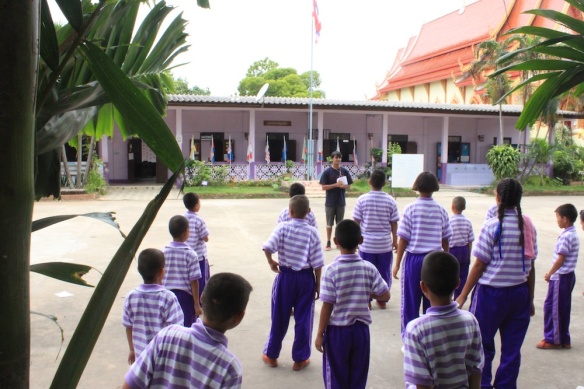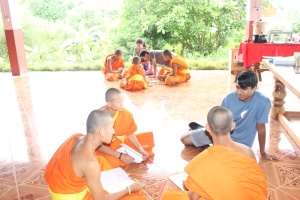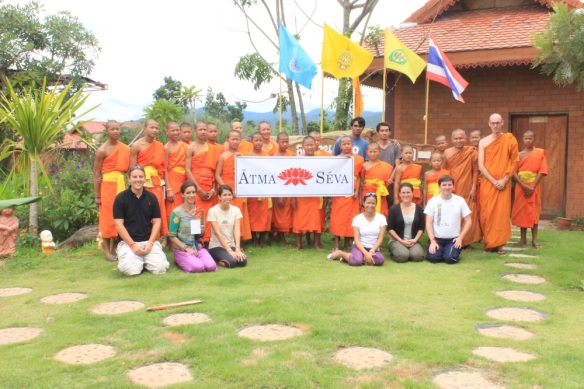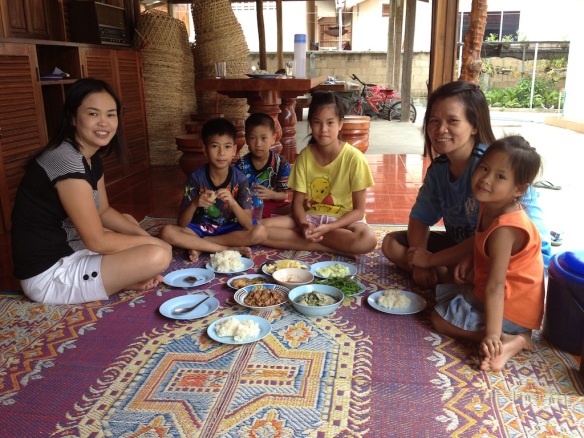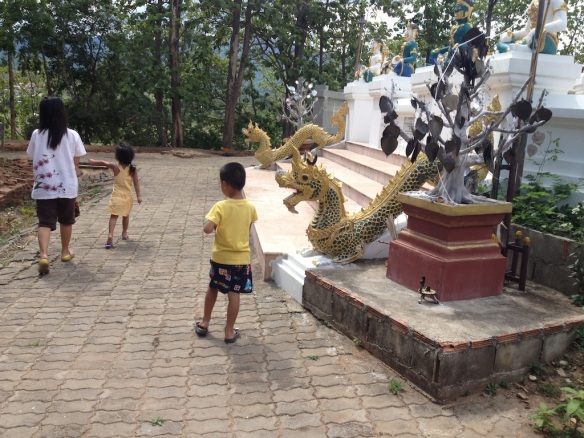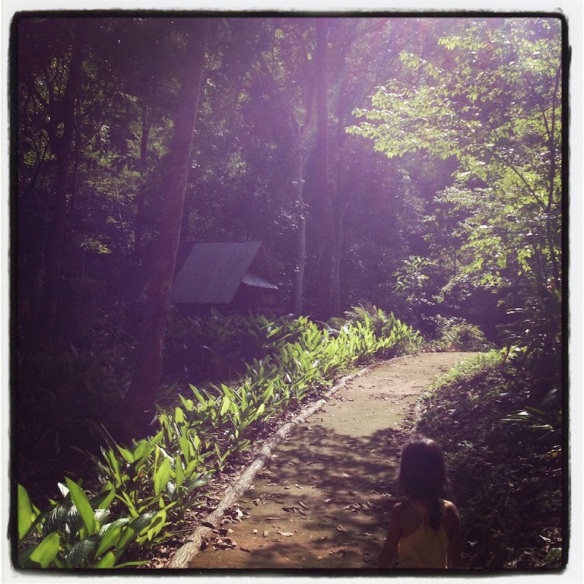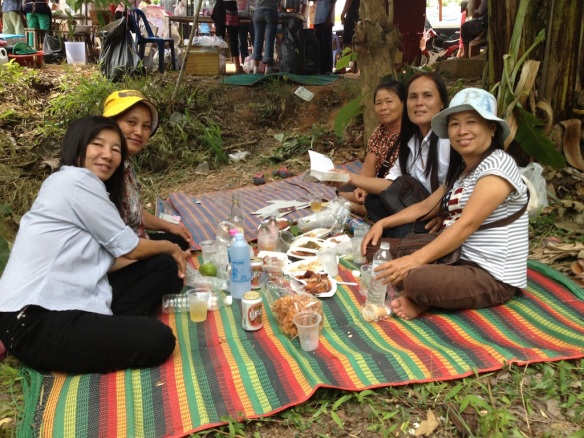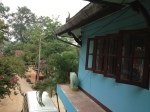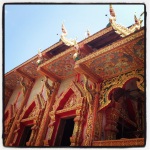On Friday, May 24th Buddhists from all over Thailand gathered to celebrate one of the most auspicious Buddhist holidays: Visakha Bucha Day. Visakha Bucha falls on the full moon of the sixth lunar month and marks three important events in the Buddha’s life: the Buddha was born, attained enlightenment, and died, all of which occurred on the same day (many years apart, of course).
Visakha Bucha is a national holiday where many Buddhist Thai families take the time to visit their temple and celebrate the Buddha’s life. This was my first time partaking in a Buddhist holiday and I have to admit, I found it quite moving. The day started off with a festive breakfast where we were joined by over 30 guests, many of whom had spent the night at Pleekwiwek the night before. Our breakfast consisted of more vegetable dishes than usual (four different leafy-green stir-fry dishes and sticky rice wrapped in green banana leaves) and the “green” theme carried on throughout the day’s activities.

String ceremony.
After breakfast we headed to the main Sala where the visitors assembled donation “trees”. We then proceeded to sit down and hear about the Buddha’s life and teachings (the Dhamma). We were then instructed to pull the strings that were hanging from the ceiling and wrap them around heads, the most sacred part of our body, as part of the blessing ceremony.The string unites all of us to the blessing and links us directly to the Buddha image at the front of the Sala. The string ceremony helps to raise your spirits and help you overcome challenges in your life. This ceremony can take place during different days of the year as well; you can ask a monk to perform it if you feel as though you are in low spirits and need strength to overcome the challenges you are facing. The monks and novice monks at the Center then proceeded to chant for 30 minutes, as they blessed the participants for their contributions to the community.

The main individual needing their spirits to be lifted would sit under the three branches with a string wrapped around his/her head. The three branches represent three important tenants of Buddhism: speaking no evil, thinking no evil, and doing no evil.
After the chanting ended, we each pulled down our string and were instructed to keep the prayer flag and keep it to bring luck, prosperity, and protection. These flags would normally be added to the spirit house one has outside their home or a small shrine in their home.
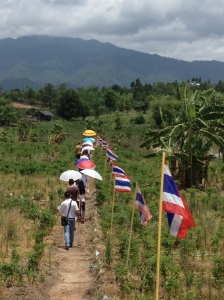
On the way to planting trees!
We then proceeded to the field behind the Center to partake in a tree-planting ceremony, as Visakha Bucha has also been designated National Tree Day in Thailand. Many of the individuals at the ceremony had donated funds in order to purchase nearly fifty trees that will be planted throughout Pleekwiwek Center.
Similar to the string ceremony that was held in the Sala, the tree planting ceremony also used a string to connect all of us to the tree (the new life) that was being planted. The string was attached to the small sapling and each participant held the string in their hands as the monks and novices chanted and blessed ceremony. Incense and small fruit baskets were given as an offering, along with white paper flowers.

Blessing ceremony for new trees.
After the first sapling was planted, we proceeded to the next site where two trees were planted. Everyone participated by either physically touching the tree as it went into the ground, or if you were unable to reach it, you would gently put your hand on the back of the person in front of you who was touching the tree. It was not unlike the string – we were all connected to each other and to new life. The next site had four trees to plant, and the last one had eight. After planting the fifteen trees we then ended the day with a festive lunch before sending our visitors off.

My friend Wan preparing the offering.
In the evening, one of the Center’s close friends, Wan (meaning sweet), invited me to join her in making offerings to the Buddha. She spoke to me in Thai quickly and without hesitation as if I understood every word. I listened attentively and looked for hints in her body language, piecing together the few words I could understand. I was eager to learn, not only about her culture, religion and language, but also eager to find understanding beyond words and find a universal language. She patiently showed me how to make a banana leaf cone in which we placed flowers, three sticks of incense (one representing the Buddha, one the Dhamma, and one the Buddha’s followers, or Sangha), and a candle. We then proceeded to visit the first sapling we had planted earlier in the day. Wan prayed aloud and we then had a moment to silently pray or reflect. We then slowly circled the tree three times chanting, clasping our offerings in prayer position and then left our offerings with the sapling.
Traditionally one circles around the pagoda at their temple with candles and flowers in the evening as they mark the end of Visakha Bucha, but as we do not have a pagoda at the Center, we decided to end our day by coming full circle to that first tree – and symbol of life – that started our day.
Maria Moreno, on-site intern
info@atmaseva.org
www.atmaseva.org







